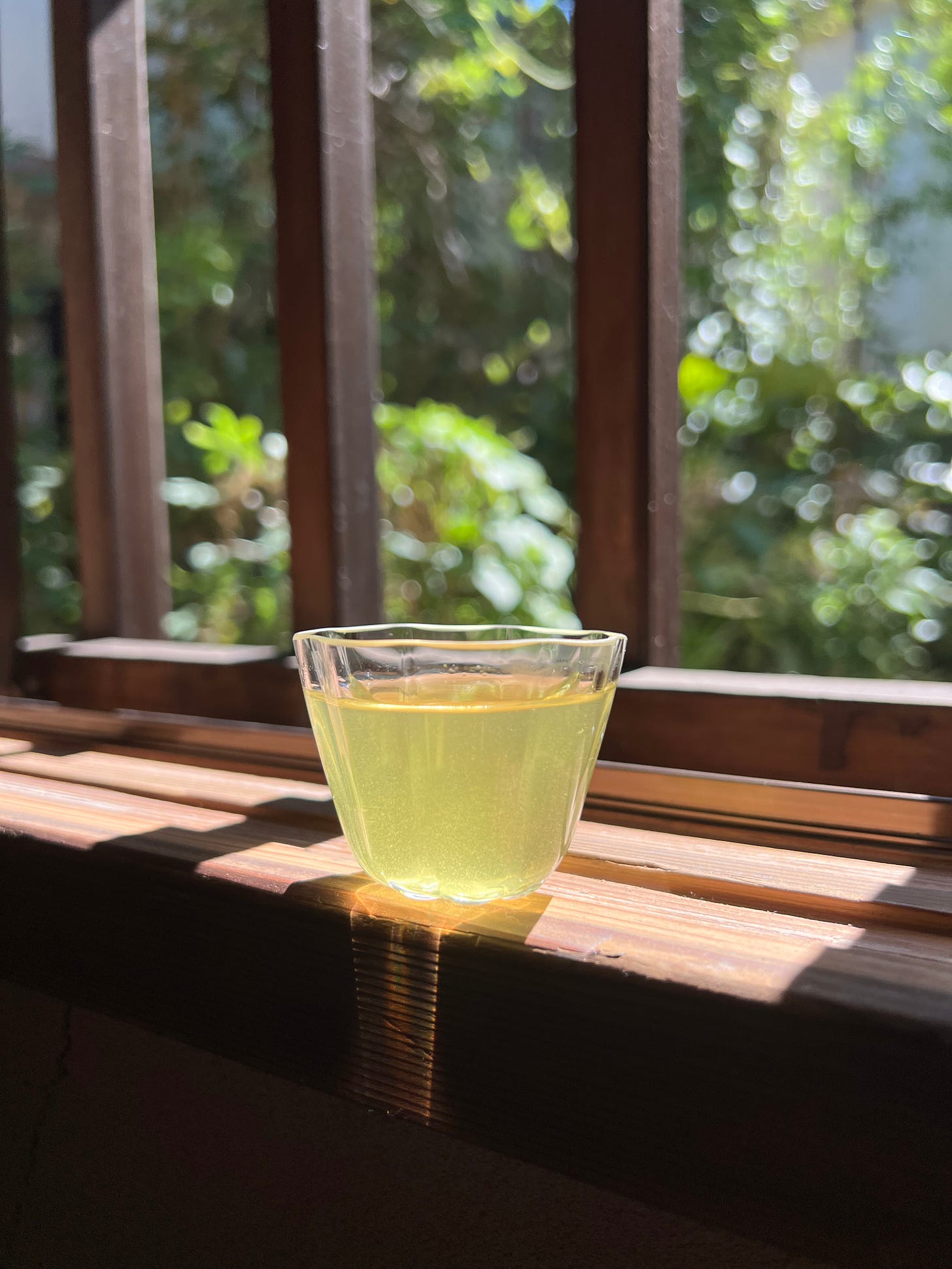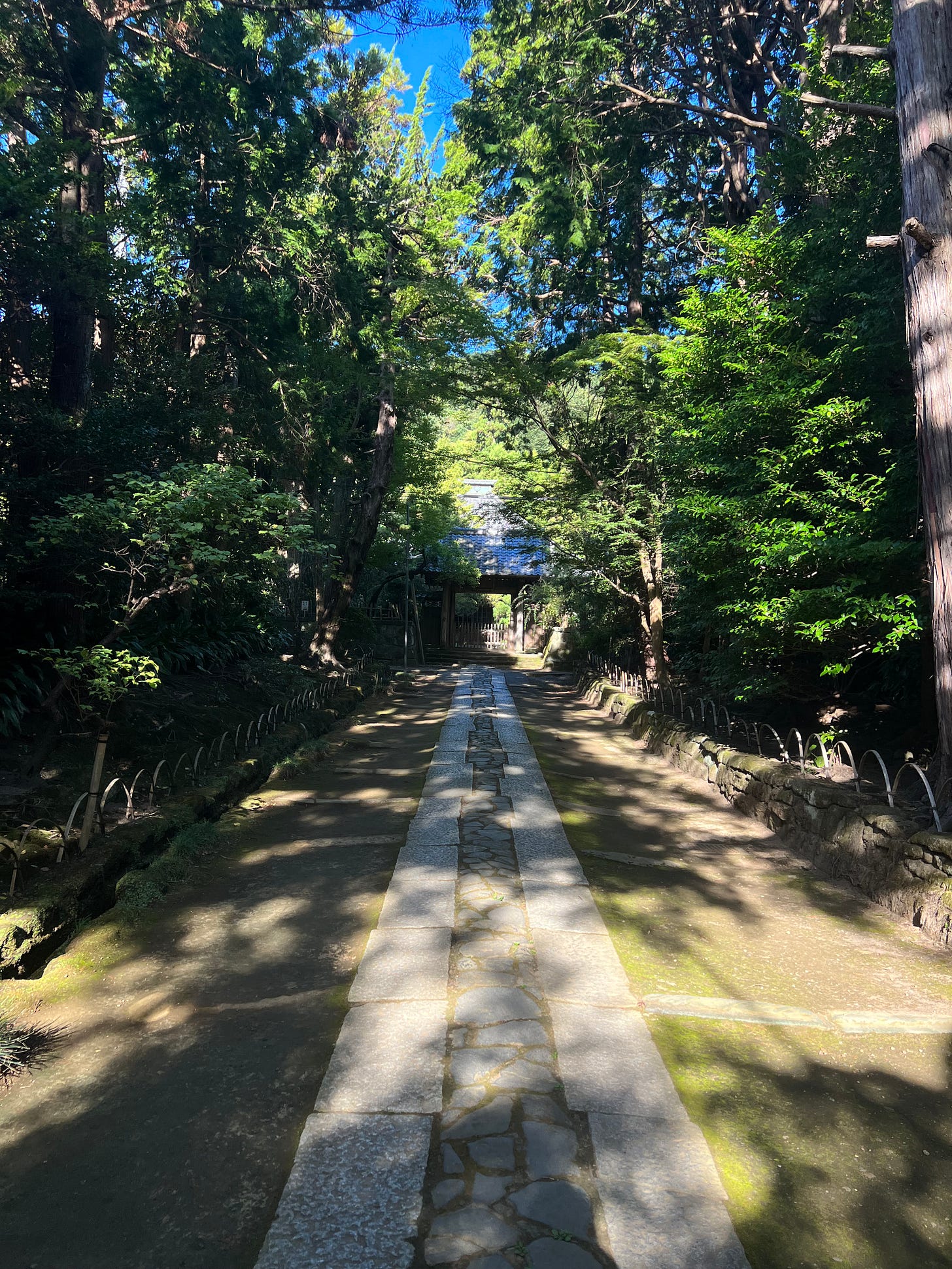Pairing 004: Post-Zazen Shizuoka Sencha x Gil Scott-Heron’s “Legend In His Own Mind (Live, Bremen 1983)
In which I do it wrong and the Amnesia Express comes to my rescue during a 6 AM meditation at Engaku-Ji sitting beside a French martial artist.
“To hear him tell it,
He is undefeated,
Napoleon,
Ever the conquest,
We’d would like to tell you a song,
About somebody who may well be lying to themselves,
It is called the ‘Legend In His Own Mind.’”
- Gil Scott-Heron (Live, Bremen, 1983)
It’s 10 AM. I’m drinking a koshun sencha grown near the Warashina River basin, not far from Shizuoka City, where I bought it at Chaya Suzuwa. It’s fragrant and astringent, hearty and zappy. It lingers in and around my teeth. Clinging in a quiet carnival of taste trapeze where the prizes at the amusement stands come in multitudes.
And, this time, I’m listening to the right Gil Scott-Heron live album that Rumal reached out to share with me a few weeks back: Gil Scott-Heron & His Amnesia Express “Legend In His Own Mind”
Of course, I had written about a completely different renegade live album—which bizarrely enough had been mysteriously uploaded to Spotify but some unnamed citizen—and I stand by my thoughts about the artist and his work, even if the album I wrote about has now vanished.
I apologize only because you see, I had done it wrong. I reviewed the first live album I saw on his page, rather than checking my email to make sure I had the right project.
As the incredible Amnesia Express band members (including legendary saxophonist Ron Holloway) blow their phenomenal solos on the rendition of “Winter In America,” which comes about halfway through the record’s 19 tracks, let me break from talking about the record to tell you about my morning. Trust me, the two are related.
A few hours ago, I was seated in the butsuden at Engaku-Ji, one of Japan’s most important zen temples, right beside Kita-Kamakura station. We took a small break between seated meditation sessions (zazen) and an intense Frenchman sitting beside me took the opportunity to stand up and conduct, what appeared to be, martial arts maneuvers as a way to iron out the kinks in his body that sitting cross-legged ostensibly caused. His moves aroused what I can safely call curiosity among other practitioners, including a few of the monks. He used one of the columns in the butsuden to prop up his body as he stretched and tilted in a rather dramatic fashion for so early in the morning, the birds chirping outside and a few mosquitos zipping around between us. A pungent incense in the air.
A few years ago, maybe even a few days ago, I might have thought this gentleman was—well—doing it wrong and left it at that. In a cultural sense, one isn’t always welcome to use the physical universe to their aid in Japan the way one might be in other places. You don’t just sit on any set of stairs you find. Maybe, one also ought not use a part of the main hall of a spiritual place of worship to stretch it out.
And so, this is when the story could begin. This man was the man Gil Scott-Heron was singing about when he made the song “Legend In His Own Mind.” He showed up late. He spoke no Japanese. He turned the butsudan into a sparring gym. It was as if, all the world was fixed up for his sake. As if it revolved around him. A legend, at least, in his own mind. An obliviant.
And then, that’s when it hit me. This quickly woven story wasn’t about him at all. It was about me. I was the one who was a legend in my own mind, the one pretending to know what I was doing even if it was my first time at this particular practice, the one acting like I could understand every word of Japanese when I had plenty of gaps myself. The one who still struggles with everything from my eyes to my posture during a zazen session. I was the guy in the song. Me.
But, in the moment, as these thoughts avalanched down the edges of my early morning mind a few hours ago, I was able to notice them as judgement—the kernel of a story to spin about any number of larger conclusions—and the cascade stopped. The thoughts were allowed to sit there on the tongue without being spat out or swallowed in. Eventually, like a small cube of sugar, they simply dissolved. In so doing, this fellow and I remained unburdened by any additional narrativization on my part and onward the zazen session continued.
And so let’s continue now together:
As a novice Gil Scott-Heron scholar myself, I had never heard of the “Amnesia Express” before this release. Hearing the band blow their crystal-clear horns (the recording quality for this Bremen record is incredible for a live album) on “Shut ‘Em Down” after another excellent aside from Gil about nuclear power, made me aware that I will continue to require an Amnesia Express of my own, a thought eraser, a sugar dissolver, if this tea medicine is going to work its magic. Maybe that’s what the extensive instrumental solos strung across this live performance from almost 40 years ago—or indeed any live performance—also are: an express train to amnesia town where we forget ourselves and all those stories we unconsciously concoct about others. To test the theory, try listening to the nearly 30 minutes of sound across “B-Movie” and “The Bottle” with your eyes closed and see whether or not you’re transported. These aren’t instrumental solos. They are express trains out of oneself.
All of the interludes on the album are rich with Gil’s classic humor, surgical insight, and heartfelt sincerity. The Washington DC interlude landed particularly poignant after having just returned from the nation’s capital myself. These interludes between songs remind me of the spaces between structures at temples and shrines here in Kamakura. Often the structures are staggering, national treasures, even, but it is these in-between spaces—the Chinese junipers at Kenchoji between the Sanmon Gate and the Butsuden—that often stay with me.
Maybe that’s doing it wrong—to listen to an album for the interludes and solos as much as the songs, to visit the temple for the spaces between as well as the works of art, to meditate for the snags as well as the moments of serenity—but doing it wrong is inseparable from my experience.
On the way home this morning, I stopped at Jufuku-Ji. I believe this is Japan’s first Zen temple (outside of one in Kyushu) where Eisai brought the zen school of thought to Japan—along with tea seeds—from China. The temple is closed to the public, but I often like to stop and walk the approach, the space between the Somon gate and the main temple. It’s the place where so much of Kamakura’s history and my personal interests align, and yet, you can’t even go inside. You’re left with only the approach. Here was where the first ever book about tea was written in Japan. Here is where zen and tea came to Kamakura, and the third shogun—Minamoto no Sanetomo drank it as a remedy for his hangovers.
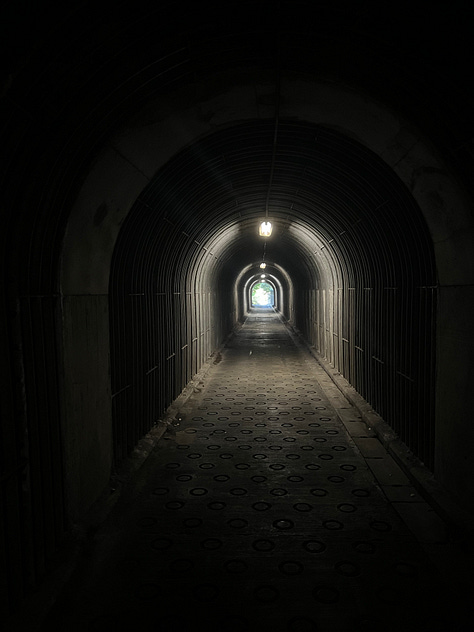
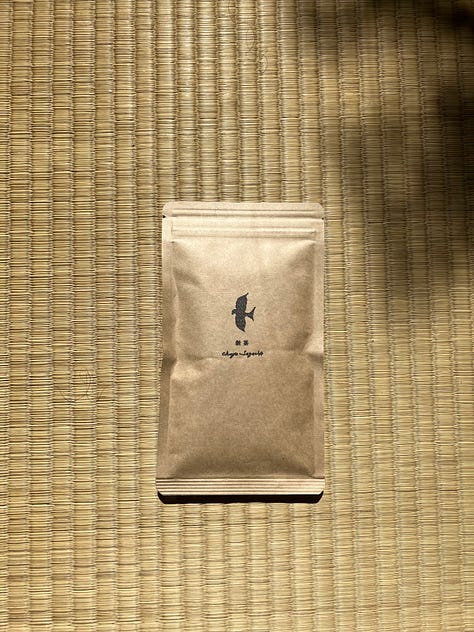
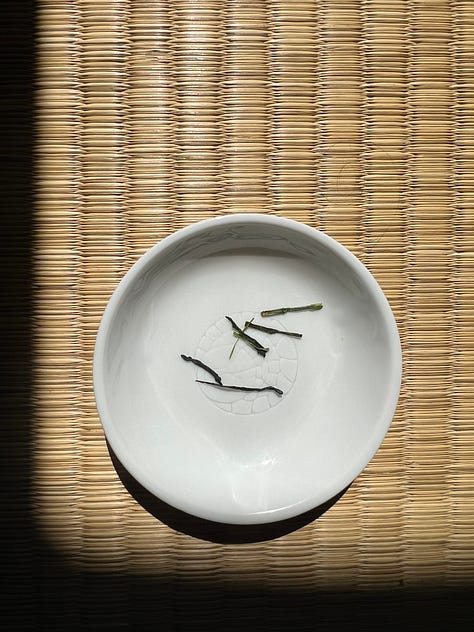

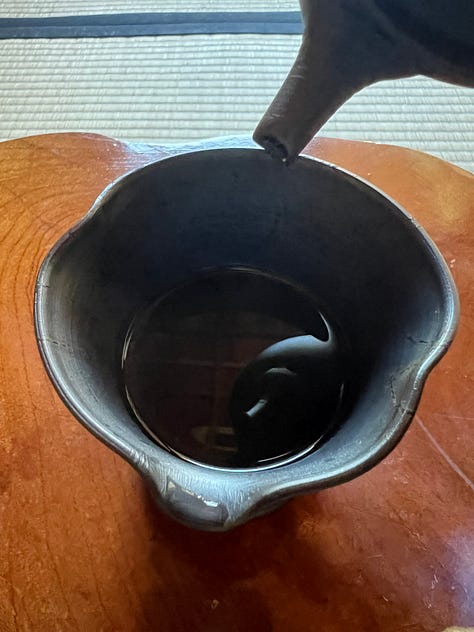
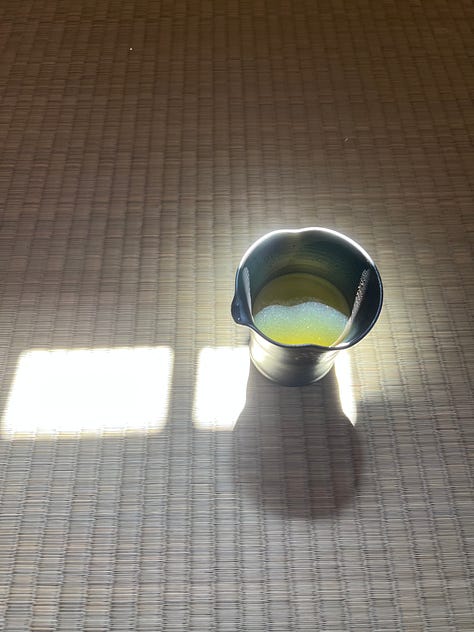
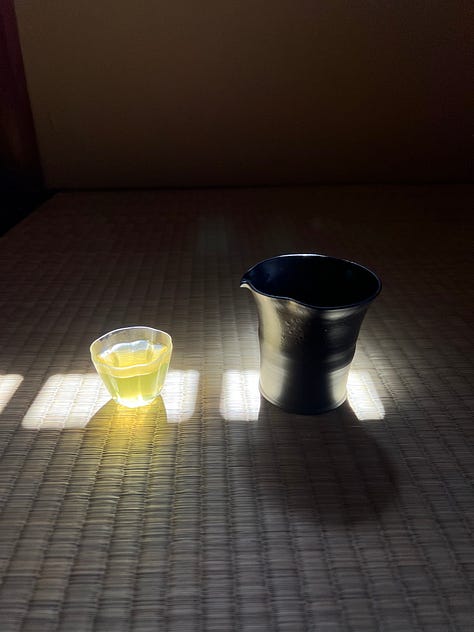


In that way, you could say these two practices—zen and tea—were the shoguns own kind of Amnesia Express. Instead of asking the question of whether or not they can be mine if I do it right (or, for that matter if I do it wrong)—or whether being a “Legend In His Own Mind” is the cause of a solution to life’s problems (or Shogun problems)—I’m just going to listen to the hand drums layer beneath the harmonica on “Better Days Ahead” and remember that 100 years ago today was the Great Kanto Earthquake that changed so much of life in Japan (and send so many Japanese abroad).
You just get an approach.
Whether it’s a miracle, a disaster, or just another tea and meditation grappling session ahead, may Gil’s iconic baritone lyrics point you—as they pointed me as I’ve delved into yet another excellent live recording of the man I painfully never got to see play myself—back to the approach in front of you:
Just take my hand,
You're the one I need to understand,
For Better days ahead.




